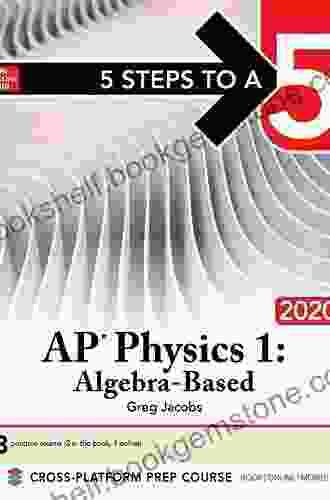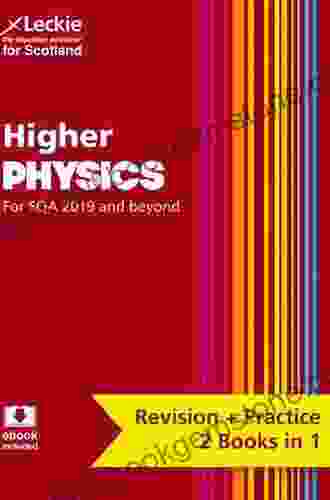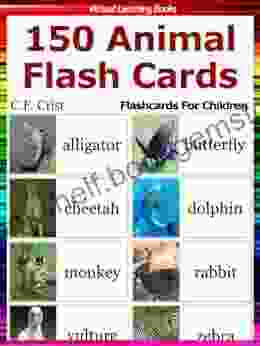Guide to Curriculum and Pedagogy for College Design Faculty and Teachers Who Want to Get It Right

In the realm of higher education, the fields of curriculum and pedagogy are of paramount importance. For college design faculty and teachers, understanding and effectively implementing these concepts are essential for fostering meaningful learning experiences and empowering students to become successful designers. This comprehensive guide aims to provide educators with a thorough understanding of curriculum and pedagogy, equipping them with the knowledge and tools to design and deliver impactful design education.
What is Curriculum?
Curriculum refers to the organized framework of learning goals, content, activities, and assessments that guides the educational experience. It serves as a blueprint for what students should learn, how they will learn it, and how their progress will be evaluated. In the context of design education, curriculum encompasses the specific knowledge, skills, and abilities that students need to master in order to become competent designers.
Types of Curriculum Models
Various curriculum models exist, each with its own strengths and weaknesses. Common models include:
4.1 out of 5
| Language | : | English |
| File size | : | 5824 KB |
| Text-to-Speech | : | Enabled |
| Enhanced typesetting | : | Enabled |
| Print length | : | 218 pages |
| Screen Reader | : | Supported |
- Subject-centered: Focuses on the transmission of knowledge within specific disciplines or subjects.
- Student-centered: Prioritizes the needs and interests of students, allowing for flexibility and choice.
- Integrated: Blends different subject areas and disciplines to provide a holistic learning experience.
- Competency-based: Emphasizes the acquisition of specific skills and abilities, with students progressing through the curriculum based on demonstrated competence.
Principles of Effective Curriculum Design
Effective curriculum design is grounded in a set of fundamental principles:
- Alignment: Curriculum goals and objectives should align with the overall educational mission and goals of the institution.
- Relevance: Content should be relevant to the field of design and the needs of students.
- Rigor: Curriculum should challenge students intellectually, while also being accessible and achievable.
- Diversity: Curriculum should represent a diverse range of perspectives, cultures, and viewpoints.
- Flexibility: Curriculum should allow for customization and adaptation to meet the needs of individual students and changing industry trends.
What is Pedagogy?
Pedagogy refers to the specific methods and techniques used by teachers to facilitate learning. It involves the art and science of teaching, encompassing the strategies, activities, and interactions that promote student engagement, understanding, and retention.
Types of Pedagogical Approaches
There are numerous pedagogical approaches, including:
- Traditional: Emphasizes teacher-centered instruction, with students passively receiving knowledge.
- Constructivist: Focuses on student-centered learning, where students actively construct knowledge through hands-on experiences and problem-solving.
- Collaborative: Involves students working together to learn and achieve common goals.
- Experiential: Provides students with opportunities for real-world experiences and applications.
- Technology-enhanced: Utilizes technology to enhance and support the learning process.
Principles of Effective Pedagogy
Effective pedagogy is guided by a set of core principles:
- Student-centered: Learning should be tailored to the needs, interests, and learning styles of students.
- Active: Students should be actively involved in the learning process, engaging in hands-on activities, problem-solving, and critical thinking.
- Interactive: Pedagogy should foster interactions between students, teachers, and content.
- Reflective: Students should be encouraged to reflect on their learning experiences and identify areas for improvement.
- Assessment-driven: Pedagogy should be informed by ongoing assessment of student progress, providing feedback and adjusting instruction accordingly.
Curriculum and Pedagogy in Design Education
In the context of design education, curriculum and pedagogy are inextricably linked. The curriculum provides the framework for what students need to learn, while pedagogy determines how that learning is facilitated. Effective design education requires a careful alignment between curriculum and pedagogy, ensuring that the chosen pedagogical approaches support the achievement of curriculum goals.
Curriculum Design for Design Education
When designing curriculum for design education, it is essential to consider the following:
- Identify industry trends: Stay abreast of current and emerging trends in the design industry to ensure that curriculum is relevant and prepares students for success in the workplace.
- Define learning outcomes: Clearly articulate what students should know, understand, and be able to do upon completing the program.
- Select content: Choose content that is engaging, challenging, and aligns with the learning outcomes.
- Organize content: Structure content in a logical and sequential manner, ensuring a smooth transition between topics.
- Incorporate assessments: Develop assessments that accurately measure student learning and provide feedback for improvement.
Pedagogical Approaches for Design Education
Effective pedagogical approaches for design education include:
- Studio-based learning: Provides students with a dedicated space to work on design projects, engage in critique, and receive feedback from peers and instructors.
- Project-based learning: Involves students working on real-world design projects, developing their skills and addressing industry-specific challenges.
- Problem-based learning: Presents students with complex problems to solve, encouraging them to apply design thinking and critical analysis.
- Peer review: Promotes collaboration and critical thinking by having students provide feedback on each other's work.
- Experiential learning: Offers opportunities for students to engage in hands-on experiences, such as internships, workshops, and field trips.
Assessment in Design Education
Assessment is a crucial aspect of design education, providing feedback to students and instructors on the effectiveness of the curriculum and pedagogy. Assessment methods typically include:
- Formative assessment: Ongoing feedback during the learning process to identify areas for improvement.
- Summative assessment: Formal evaluations at the end of a unit or course to measure student achievement.
- Portfolio assessment: A collection of student work that demonstrates their skills, progress, and reflection.
- Peer assessment: Students evaluate each other's work, providing constructive feedback and insights.
- Self-assessment: Students reflect on their own learning, identifying strengths and areas for growth.
Technology in Design Education
Technology plays a significant role in contemporary design education, offering tools and platforms that enhance student learning. Examples include:
- Design software: Students use industry-standard design software to create digital models, renderings, and animations.
- Collaboration tools: Online platforms facilitate collaboration between students, instructors, and design professionals.
- Virtual reality (VR) and augmented reality (AR): Immersive technologies provide students with realistic and interactive learning experiences.
- 3D printing: Students can create physical prototypes of their designs, enabling hands-on experimentation and testing.
Curriculum and pedagogy are fundamental pillars of effective design education, guiding the design and delivery of meaningful learning experiences. By understanding the concepts and principles outlined in this guide, college design faculty and teachers can create curricula that empower students to become skilled designers and contribute to the advancement of the design industry. By embracing a student-centered approach, utilizing diverse pedagogical strategies
4.1 out of 5
| Language | : | English |
| File size | : | 5824 KB |
| Text-to-Speech | : | Enabled |
| Enhanced typesetting | : | Enabled |
| Print length | : | 218 pages |
| Screen Reader | : | Supported |
Do you want to contribute by writing guest posts on this blog?
Please contact us and send us a resume of previous articles that you have written.
 Best Book
Best Book Page Flip
Page Flip Bookshelf
Bookshelf Literary loom
Literary loom Chapter
Chapter Bookish
Bookish PageTurner
PageTurner Bibliophile
Bibliophile Story
Story Inkwell
Inkwell Bookworm
Bookworm Labyrinth
Labyrinth Plot Twist
Plot Twist Prose
Prose Paperback
Paperback Storyteller
Storyteller Sanctuary
Sanctuary Fiction
Fiction Reading
Reading Chronicle
Chronicle Read
Read Sara Dawn Johnson
Sara Dawn Johnson Brandon Royal
Brandon Royal John Morrison
John Morrison Mitt Romney
Mitt Romney John Hersey
John Hersey Pico Iyer
Pico Iyer Sandra Cain
Sandra Cain Paul Deepan
Paul Deepan Roald Amundsen
Roald Amundsen David Baldacci
David Baldacci Kyoan
Kyoan Marty Gitlin
Marty Gitlin Indy Quillen
Indy Quillen Magi Nams
Magi Nams Ted Dorsey
Ted Dorsey Asrai Devin
Asrai Devin Brian Clegg
Brian Clegg Shannon Enete
Shannon Enete Robert Whiting
Robert Whiting Ruth Everhart
Ruth Everhart Marcia Desanctis
Marcia Desanctis Blether Travel Guides
Blether Travel Guides Karen O Toole
Karen O Toole James Teitelbaum
James Teitelbaum Wendy Francis
Wendy Francis Genius Reads
Genius Reads Burt L Standish
Burt L Standish Carrie Winstanley
Carrie Winstanley Nic Oatridge
Nic Oatridge Bill Streever
Bill Streever Alison Mcghee
Alison Mcghee Sunny Lockwood
Sunny Lockwood Ginger Sinsabaugh
Ginger Sinsabaugh Dennis Stemmle
Dennis Stemmle Clair Lasater
Clair Lasater Kindle Edition
Kindle Edition Thaddeus Hatter
Thaddeus Hatter Stephen Haddelsey
Stephen Haddelsey Shannon Ables
Shannon Ables Robin Hobb
Robin Hobb Tom Palmer
Tom Palmer Dan Fullerton
Dan Fullerton Thomas Booth
Thomas Booth Chris Moss
Chris Moss Shawn Inmon
Shawn Inmon Chantel Acevedo
Chantel Acevedo Clay Boutwell
Clay Boutwell Raja Shehadeh
Raja Shehadeh Angelo Tropea
Angelo Tropea Go Books
Go Books Josh Tabor
Josh Tabor Bryan Nelson
Bryan Nelson Ronald A Reis
Ronald A Reis Rosemarie Allen
Rosemarie Allen Janine Robinson
Janine Robinson Richard Connor
Richard Connor T I Lowe
T I Lowe Eric Simons
Eric Simons John Mcphee
John Mcphee Beau Riffenburgh
Beau Riffenburgh Russell Clark
Russell Clark Mathivanan Palraj
Mathivanan Palraj Omni Reads
Omni Reads Lois Pryce
Lois Pryce Damion Hunter
Damion Hunter Mario Rizzi
Mario Rizzi Peter Barber
Peter Barber Robert A Johnson
Robert A Johnson Ben Buckton
Ben Buckton Steven Schneider
Steven Schneider Paul Blanchard
Paul Blanchard Dr John T Whiting
Dr John T Whiting Rebecca Westrup
Rebecca Westrup Nat Brown
Nat Brown William Pitts
William Pitts James Good
James Good Brad Dude
Brad Dude Lila Z Rose
Lila Z Rose Lance Pototschnik
Lance Pototschnik Judy Tilton Brunner
Judy Tilton Brunner C F Carter
C F Carter R Bruce Richardson
R Bruce Richardson Erica Abbett
Erica Abbett Peter Mcdougall
Peter Mcdougall 4th Edition Kindle Edition
4th Edition Kindle Edition C Michael Hiam
C Michael Hiam Kevin Griffith
Kevin Griffith Hokulani K Aikau
Hokulani K Aikau Matt Rendell
Matt Rendell David Morris
David Morris Devaki Lakshmi
Devaki Lakshmi Mark Greenside
Mark Greenside Joshua Obanijesu
Joshua Obanijesu Kingsley Augustine
Kingsley Augustine Donnie Smith
Donnie Smith Brandon Stanton
Brandon Stanton Brad Olsen
Brad Olsen Scott Coplan
Scott Coplan Yuki Mano
Yuki Mano Hans Staden
Hans Staden Jay Griffiths
Jay Griffiths Kathleen Kirkland
Kathleen Kirkland Tracy Brown Collins
Tracy Brown Collins Maria Elena Alonso Sierra
Maria Elena Alonso Sierra Laurie Frankel
Laurie Frankel Simon Winchester
Simon Winchester Ben Wildavsky
Ben Wildavsky Graham Mackintosh
Graham Mackintosh Cathy A Malchiodi
Cathy A Malchiodi David Mcilroy
David Mcilroy Geraldine Woods
Geraldine Woods Glenn Rivers
Glenn Rivers The Total Travel Guide Company
The Total Travel Guide Company Dinesh Kumar Goyal
Dinesh Kumar Goyal Rafael Ocasio
Rafael Ocasio Tommy Xiao Wan
Tommy Xiao Wan Roderick J Fraser Jr
Roderick J Fraser Jr Janet Evans
Janet Evans Joseph A Citro
Joseph A Citro Tao Le
Tao Le Rashaun Johnson
Rashaun Johnson Georgios Papadakis
Georgios Papadakis Robert Louis Stevenson
Robert Louis Stevenson Steve Sorensen
Steve Sorensen Jeri Magg
Jeri Magg James A Cashin
James A Cashin Barbara A Lynch Johnt
Barbara A Lynch Johnt Marie Cirano
Marie Cirano Paul Noble
Paul Noble Steven Rothfeld
Steven Rothfeld Jess Tiffany
Jess Tiffany Lizabeth Hardman
Lizabeth Hardman Terrance Zepke
Terrance Zepke American Math Academy
American Math Academy Martin Sternstein
Martin Sternstein Barbara Allan
Barbara Allan Viki Winterton
Viki Winterton Daily Language Learning
Daily Language Learning Leland Chant
Leland Chant Tyler Omoth
Tyler Omoth Christie Sausa
Christie Sausa Bruce Rosenfeld
Bruce Rosenfeld John Otis
John Otis William Cowper Prime
William Cowper Prime Gebshu Kukhet
Gebshu Kukhet Caryn Boddie
Caryn Boddie Heather E Schwartz
Heather E Schwartz Bruno Grelon
Bruno Grelon Susan Straight
Susan Straight Arthur Miller
Arthur Miller Beth Bartolini Salimbeni
Beth Bartolini Salimbeni John Gregory Smith
John Gregory Smith Bruce Berglund
Bruce Berglund Tony Burton
Tony Burton Rets Griffith
Rets Griffith John Gilstrap
John Gilstrap Brandon Sanderson
Brandon Sanderson Bob Reiss
Bob Reiss Devin Carroll
Devin Carroll Anna Curran
Anna Curran Jeffrey Brautigam
Jeffrey Brautigam Agnieszka Latocha
Agnieszka Latocha David Faulkner
David Faulkner William Least Heat Moon
William Least Heat Moon Lori Schumacher
Lori Schumacher Simon Gervais
Simon Gervais Johan Reinhard
Johan Reinhard Clifford D Stark
Clifford D Stark Study Guide Edition Kindle Edition
Study Guide Edition Kindle Edition William W Johnstone
William W Johnstone Michael Tefula
Michael Tefula James Rollins
James Rollins Greg Wyshynski
Greg Wyshynski Tara Kangarlou
Tara Kangarlou Daniel Putkowski
Daniel Putkowski Pat Guy
Pat Guy Nick Kypreos
Nick Kypreos R K Agarwal
R K Agarwal Suzanne Brickman
Suzanne Brickman Reinaldo Arenas
Reinaldo Arenas Sue Tyson Ward
Sue Tyson Ward Michael Lieberman
Michael Lieberman Brian Reddington
Brian Reddington Janet Beissinger
Janet Beissinger Sally Poncet
Sally Poncet Gill James
Gill James Stephen Tarsitano
Stephen Tarsitano Steve Hely
Steve Hely Robert Caprio
Robert Caprio Jeff Kolby
Jeff Kolby Martin J Pring
Martin J Pring Nilakantasrinivasan J Neil
Nilakantasrinivasan J Neil John Biggam
John Biggam College Hippo
College Hippo George J Hademenos
George J Hademenos Stephanie Lewis
Stephanie Lewis J A Johnstone
J A Johnstone Nirosha Ruwan
Nirosha Ruwan Bruce Boudreau
Bruce Boudreau Deborah Miller
Deborah Miller Gwenda Cornell
Gwenda Cornell Atul Kalhan
Atul Kalhan Alina Adams
Alina Adams Paul Volponi
Paul Volponi Haim Watzman
Haim Watzman Peter Liljedahl
Peter Liljedahl Charles Dickens
Charles Dickens Scott Graham
Scott Graham Zigzag English
Zigzag English Ruth Garner
Ruth Garner 1st Edition Kindle Edition
1st Edition Kindle Edition Jacob Brezinski
Jacob Brezinski Michael Egan
Michael Egan Benjamin Smith
Benjamin Smith Lori Haskins Houran
Lori Haskins Houran Vernon G Zunker
Vernon G Zunker Funso Aiyejina
Funso Aiyejina Ryszard Kapuscinski
Ryszard Kapuscinski Charles H Dyer
Charles H Dyer Jon C Stott
Jon C Stott Mark Zegarelli
Mark Zegarelli Russ Howard
Russ Howard Vincent Chidindu Asogwa
Vincent Chidindu Asogwa Lee Jamison
Lee Jamison James D Giovannini
James D Giovannini Joseph Mctaggart
Joseph Mctaggart Jackson Carter
Jackson Carter Andy Fine
Andy Fine Lsatmax Lsat Prep
Lsatmax Lsat Prep Marie Herbert
Marie Herbert Shirley J Shepherd
Shirley J Shepherd Mike Sonnenberg
Mike Sonnenberg Trish Nicholson
Trish Nicholson Chris Santella
Chris Santella Wolfedale Press
Wolfedale Press James Patterson
James Patterson Peterson S
Peterson S Suzanne Reece
Suzanne Reece Sarah Vowell
Sarah Vowell Ed Stafford
Ed Stafford Pamela And Fred Peters
Pamela And Fred Peters Arianna Astuni
Arianna Astuni Rick Steves
Rick Steves Christina Pawlowski
Christina Pawlowski Gideon Labiner
Gideon Labiner Barbara Krumhardt
Barbara Krumhardt Print Replica Kindle Edition
Print Replica Kindle Edition Julian Mcdougall
Julian Mcdougall Barry Eisler
Barry Eisler Tristan Jones
Tristan Jones Sylvain Tesson
Sylvain Tesson Jason Hogan
Jason Hogan Paul Watson
Paul Watson Michael V Uschan
Michael V Uschan Tracy Owens
Tracy Owens Bob Goddard
Bob Goddard Bob Mckenzie
Bob Mckenzie Gregory Maassen
Gregory Maassen Michel Roy
Michel Roy Marty Ofonagoro
Marty Ofonagoro Annika Hernroth Rothstein
Annika Hernroth Rothstein Steve Sonntag
Steve Sonntag Laura Dave
Laura Dave Gail Fay
Gail Fay Bob Duff
Bob Duff Blair Braverman
Blair Braverman Kelli Lawrence
Kelli Lawrence Brian Andrews
Brian Andrews Chuck Gormley
Chuck Gormley Eli Wilson
Eli Wilson Barzin Pakandam
Barzin Pakandam Pierluigi Spagnolo
Pierluigi Spagnolo Kay Walten
Kay Walten David Newton
David Newton Paddy Mcqueen
Paddy Mcqueen Arden Rembert Brink
Arden Rembert Brink Tara Baukus Mello
Tara Baukus Mello Rebecca Kaye
Rebecca Kaye Bruce Spydar
Bruce Spydar Lonely Planet
Lonely Planet Gray Malin
Gray Malin Maha Alkurdi
Maha Alkurdi Penelope Douglas
Penelope Douglas Michael R Lindeburg
Michael R Lindeburg Vincent Min
Vincent Min Kayla Chalko
Kayla Chalko Phyllis Folb
Phyllis Folb Mark Donnelly
Mark Donnelly Borja Loma Barrie
Borja Loma Barrie Matt Kalman
Matt Kalman C F Crist
C F Crist Sergio Rassu
Sergio Rassu Nicholas Hirshon
Nicholas Hirshon Charles A Wells
Charles A Wells Ken Horlor
Ken Horlor Jack Donnelly
Jack Donnelly Kavitha M
Kavitha M Deanne Howell
Deanne Howell Printright
Printright Jennifer Steil
Jennifer Steil Daryl Balfour
Daryl Balfour Craig M Kershaw
Craig M Kershaw Wilfred Cude
Wilfred Cude Nancy Roe Pimm
Nancy Roe Pimm Walter Dare
Walter Dare Jay Greeson
Jay Greeson Bruce Heyman
Bruce Heyman Brien Foerster
Brien Foerster Ed Willes
Ed Willes Kristin Hannah
Kristin Hannah Bob Smale
Bob Smale Lisa Pietsch
Lisa Pietsch Elizabeth Gardner
Elizabeth Gardner Sarah Smierciak
Sarah Smierciak Karen George
Karen George John Muir
John Muir Les Weatheritt
Les Weatheritt W Michael Kelley
W Michael Kelley Egon Erwin Kisch
Egon Erwin Kisch Amanda Barnes
Amanda Barnes Schoolhouse Heaven
Schoolhouse Heaven Jim Harrison
Jim Harrison Diane Lindsey Reeves
Diane Lindsey Reeves Christine A Smyczynski
Christine A Smyczynski Hugh Henderson
Hugh Henderson Judy Lipson
Judy Lipson Shannon Dittemore
Shannon Dittemore Tina Cho
Tina Cho Karen Hill Anton
Karen Hill Anton Tim Wharnsby
Tim Wharnsby Jason E Portnof
Jason E Portnof Sigurd F Olson
Sigurd F Olson Joe Abercrombie
Joe Abercrombie Johnny Quinn
Johnny Quinn Elijah N Daniel
Elijah N Daniel Nathan Halberstadt
Nathan Halberstadt Naomi Hansen
Naomi Hansen Kim Dinan
Kim Dinan Jan Tristan Gaspi
Jan Tristan Gaspi Dojolab Inc
Dojolab Inc Stephen Hui
Stephen Hui Culture Smart
Culture Smart Jeanne St James
Jeanne St James Blake Banner
Blake Banner Greg Jacobs
Greg Jacobs Richard Bronson
Richard Bronson Brad Anderson
Brad Anderson Anne Strathie
Anne Strathie Korrel Kanoy
Korrel Kanoy Freya Stark
Freya Stark Audiolearn Content Team
Audiolearn Content Team Hicham And Mohamed Ibnalkadi
Hicham And Mohamed Ibnalkadi Nick Adams
Nick Adams Emma Sue Prince
Emma Sue Prince Nahee Park
Nahee Park Terry Palechuk
Terry Palechuk Thad Vogler
Thad Vogler Paul Oliver
Paul Oliver Gerald Durrell
Gerald Durrell Kim Heinbuch
Kim Heinbuch Eric Seale
Eric Seale Tim Severin
Tim Severin Miles Martin
Miles Martin Sean Dooley
Sean Dooley Daniel Mode
Daniel Mode Balazs Csigi
Balazs Csigi Natalya Androsova
Natalya Androsova John Hodgman
John Hodgman Bobby Orr
Bobby Orr William Mckeen
William Mckeen Vicki Hearne
Vicki Hearne Frank Ayres
Frank Ayres Brett Edward Whalen
Brett Edward Whalen Levison Wood
Levison Wood Approach Guides
Approach Guides Elke Gschossmann Hendershot
Elke Gschossmann Hendershot Lawrence W Tuller
Lawrence W Tuller Oliver Bullough
Oliver Bullough Jane Bottomley
Jane Bottomley Bill Ingersoll
Bill Ingersoll Janet E Wall
Janet E Wall Leckie
Leckie Nicky Pellegrino
Nicky Pellegrino Taras Grescoe
Taras Grescoe Pamela K Lamb
Pamela K Lamb Mandee Heller Adler
Mandee Heller Adler Debbie S Miller
Debbie S Miller Lisa Kleypas
Lisa Kleypas Peter Nichols
Peter Nichols Dmv Test Bank
Dmv Test Bank Katherine Dunham
Katherine Dunham I C Robledo
I C Robledo Texes Exam Secrets Test Prep Team
Texes Exam Secrets Test Prep Team James Grant Peterkin
James Grant Peterkin Erfun Geula
Erfun Geula Nanette Witmer
Nanette Witmer Innovative Language Learning
Innovative Language Learning Ingo Berensmeyer
Ingo Berensmeyer Annabel Chase
Annabel Chase Jon A Archambault
Jon A Archambault Sam Quek
Sam Quek Janisse Ray
Janisse Ray Jose Antonio Vargas
Jose Antonio Vargas Dk Eyewitness
Dk Eyewitness Anton Chekhov
Anton Chekhov Sumoreads
Sumoreads Susan Jane Gilman
Susan Jane Gilman Joanna Kujawa
Joanna Kujawa Robert Andrew Powell
Robert Andrew Powell Er Sunil Batra
Er Sunil Batra Smart Edition
Smart Edition Leslie Thomas
Leslie Thomas Dr Hooelz
Dr Hooelz Dr John Hockey
Dr John Hockey Bonnie Bley
Bonnie Bley Jon B Barry
Jon B Barry William Beebe
William Beebe Barry Broadfoot
Barry Broadfoot Scott Colby
Scott Colby Brian Leaf
Brian Leaf Gary Robert Muschla
Gary Robert Muschla Lauren Lucien
Lauren Lucien Jamie Pedrazzoli
Jamie Pedrazzoli Maya Benami
Maya Benami Quick Reads
Quick Reads William Friar
William Friar Maoz Azaryahu
Maoz Azaryahu Barbara Mould Young
Barbara Mould Young Kenneth Cline
Kenneth Cline Tim Brown
Tim Brown Julia Ann Clayton
Julia Ann Clayton Rod Nordland
Rod Nordland 8th Edition Kindle Edition
8th Edition Kindle Edition Jerry A Pattengale
Jerry A Pattengale Jude Deveraux
Jude Deveraux Richard Sattora
Richard Sattora Cristen Hemingway Jaynes
Cristen Hemingway Jaynes Darcy Gaechter
Darcy Gaechter Cyprian Mendonca
Cyprian Mendonca Daniel Farcas
Daniel Farcas Gabriel J Connor
Gabriel J Connor Russell Blake
Russell Blake Doretta Groenendyk
Doretta Groenendyk R M Patterson
R M Patterson Pamela Bartley
Pamela Bartley Chris Fagan
Chris Fagan Alice Morse Earle
Alice Morse Earle Doug Hall
Doug Hall Ben Egginton
Ben Egginton Susan Davis Becker
Susan Davis Becker Pass Your Class
Pass Your Class Mary Jo Mcconahay
Mary Jo Mcconahay Ari Mennander
Ari Mennander Alexandria House
Alexandria House John R Morgan
John R Morgan Nick Jans
Nick Jans Christine Wiebe
Christine Wiebe Lucas Burns
Lucas Burns Joeanna Rebello Fernandes
Joeanna Rebello Fernandes Lynda Jones
Lynda Jones Templeton Peck
Templeton Peck Direct Hits
Direct Hits Jason Zemcik
Jason Zemcik Jose M Forero Bautista
Jose M Forero Bautista Lisa Mcclendon Sims
Lisa Mcclendon Sims Kevin Milton
Kevin Milton Darryl Hughes
Darryl Hughes Kate Maloy
Kate Maloy Ashley Schmitt
Ashley Schmitt Wilfred M Mcclay
Wilfred M Mcclay Robert Crais
Robert Crais Bryan Ethier
Bryan Ethier Bruce Barcott
Bruce Barcott David L Golemon
David L Golemon David Churchman
David Churchman Big Daddy Ozone
Big Daddy Ozone Businessnews Publishing
Businessnews Publishing Noor Ain
Noor Ain Tanmay Mehta
Tanmay Mehta James A Michener
James A Michener Corine Gantz
Corine Gantz Nicole Chung
Nicole Chung Nelson Demille
Nelson Demille Neal Patterson
Neal Patterson Wayne Stewart
Wayne Stewart Lori Evert
Lori Evert Key Notes
Key Notes Stephen J Pyne
Stephen J Pyne Louise Heal Kawai
Louise Heal Kawai Bobby Newman
Bobby Newman Intelligent
Intelligent Sharon Asher
Sharon Asher Jonathan A Levi
Jonathan A Levi Manfred Theisen
Manfred Theisen Julie Argyle
Julie Argyle Disha Experts
Disha Experts Nicholas Gagnier
Nicholas Gagnier Anthony J Bennett
Anthony J Bennett Rick Townsend
Rick Townsend Dawn Adlam
Dawn Adlam Anne E Brevig
Anne E Brevig Brent J Burrows Ii
Brent J Burrows Ii Nishant Jindal
Nishant Jindal Griselda Sprigg
Griselda Sprigg Pati Jinich
Pati Jinich Thant Myint U
Thant Myint U Curving Earth Publishing
Curving Earth Publishing Orson Scott Card
Orson Scott Card S K Gupta
S K Gupta Alex Kava
Alex Kava Marek Sobski
Marek Sobski Boye Lafayette De Mente
Boye Lafayette De Mente Michael Vlessides
Michael Vlessides April Vahle Hamel
April Vahle Hamel Gerry Lekas
Gerry Lekas Rajani Katta
Rajani Katta Stephen Graham
Stephen Graham Tia Williams
Tia Williams E C Murray
E C Murray Eunice Lewis Ph D
Eunice Lewis Ph D Anselme Baud
Anselme Baud Mary Ann Hogan
Mary Ann Hogan Original Edition Kindle Edition
Original Edition Kindle Edition Katie Malachuk
Katie Malachuk C Rich
C Rich N K Jemisin
N K Jemisin Wendy C Crone
Wendy C Crone H M Conroy
H M Conroy Osasumwen Asoro
Osasumwen Asoro Stephanie Saldana
Stephanie Saldana Rodney Paul
Rodney Paul Joseph Toone
Joseph Toone Bret Baier
Bret Baier Nikki Kazimova
Nikki Kazimova Luisa Gastambide
Luisa Gastambide Pam Coburn
Pam Coburn Craig Medico
Craig Medico Roberta Raigh Pryor
Roberta Raigh Pryor Meghan Mccarthy
Meghan Mccarthy Cathy Jackson
Cathy Jackson Paul Cobley
Paul Cobley Simon Bird
Simon Bird Gregory J Privitera
Gregory J Privitera Seymour Resnick
Seymour Resnick Susan Meissner
Susan Meissner Ryan Murdock
Ryan Murdock Dan Myers
Dan Myers Ged Gillmore
Ged Gillmore Baby Professor
Baby Professor Linda Anne Silvestri
Linda Anne Silvestri Test Masters
Test Masters Barbara Fradkin
Barbara Fradkin Sacha Black
Sacha Black Peter Ballin
Peter Ballin Brian Kent
Brian Kent Ben Cook
Ben Cook Marcia Langton
Marcia Langton Book Worm Publishing
Book Worm Publishing Illustrated Edition Kindle Edition
Illustrated Edition Kindle Edition Tiara R Brown
Tiara R Brown Beryl Ratzer
Beryl Ratzer Julie Tagg
Julie Tagg Sadeqa Johnson
Sadeqa Johnson Frances Mayes
Frances Mayes Don L Gates
Don L Gates Sybille Bedford
Sybille Bedford My Daily Russian
My Daily Russian
Light bulbAdvertise smarter! Our strategic ad space ensures maximum exposure. Reserve your spot today!

 Walt WhitmanSummer Fling Up In Flames: A Comprehensive Guide to Preventing and Managing...
Walt WhitmanSummer Fling Up In Flames: A Comprehensive Guide to Preventing and Managing...
 Amir SimmonsNavigate the Challenges of AP Physics Algebra-Based: A Comprehensive Guide to...
Amir SimmonsNavigate the Challenges of AP Physics Algebra-Based: A Comprehensive Guide to... Felipe BlairFollow ·13.6k
Felipe BlairFollow ·13.6k Holden BellFollow ·4.2k
Holden BellFollow ·4.2k Raymond ChandlerFollow ·4.5k
Raymond ChandlerFollow ·4.5k Donovan CarterFollow ·9.4k
Donovan CarterFollow ·9.4k Vincent MitchellFollow ·7.1k
Vincent MitchellFollow ·7.1k VoltaireFollow ·19.2k
VoltaireFollow ·19.2k Troy SimmonsFollow ·3.8k
Troy SimmonsFollow ·3.8k Fabian MitchellFollow ·10k
Fabian MitchellFollow ·10k

 Douglas Powell
Douglas PowellPreparation and Support for Teacher Assessment: Leckie...
Teacher assessment is an important part of...

 Derek Bell
Derek BellMaster the Basics of Japanese Grammar: A Comprehensive...
Embarking on your journey to master the...

 Edison Mitchell
Edison MitchellReasoning Ability Topic Wise Solved Papers For IBPS SBI...
The Reasoning...

 F. Scott Fitzgerald
F. Scott FitzgeraldA New Survey of the West Indies, 1648: Broadway...
Published in...

 Cooper Bell
Cooper BellPeekaboo Baby Toddler: 150 Animal Flash Cards for...
Are you ready to embark on...
4.1 out of 5
| Language | : | English |
| File size | : | 5824 KB |
| Text-to-Speech | : | Enabled |
| Enhanced typesetting | : | Enabled |
| Print length | : | 218 pages |
| Screen Reader | : | Supported |









